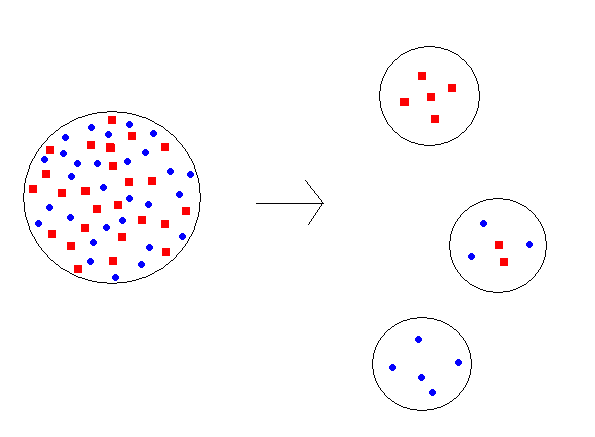The excellent blog in Spanish Language Neolítico de la Península Ibérica discusses today the following paper (freely accesible and in English language):
Gabriel García Atiénzar and Francisco Javier Jover Maestre, The introduction of the first farming communities in the Western Mediterranean: the Valencian Region of Spain as example. Arqueología Iberoamericana 2011.
The paper is indeed interesting even if I am not sure how good the Valencian case is as example, because this area is rather exceptional in the intensity of the apparent colonization. In any case it is very informative for the particulars of this area.
Briefly: they describe three phases:
- Pre-cardial (impressed pottery or "sillon d'impresion", similar to that of Côte d'Azur) pioneering sites in the 55th century BCE (C14 calibrated).
- Cardial phase: increase in density through the area of the southern Valencian Country in the 54th and 53rd centuries; change to Cardium style, possibly related to that of Provence and Languedoc and to the local Macroschematic rock art.
- Further expansion both in density and towards the interior (Murcia and Albacete provinces) along the Segura river in the late 6th millennium BCE.
 |
| Modified from fig. 6 (superimposing as red dots fig. 4): phases 1 and 2 |
 |
| Comparison between pottery (Cardial) and rock (Macroschematic) art |
The authors argue that the process of settlement by the first farming groups in these areas was not as rapid as it was thought, nor as constant as researchers had previously proposed.
If the authors of the paper make a critical read of Zilhao's fast colonization hypothesis, the always sharp authors of Neolítico en la Península Ibérica make also a critical read of the paper's colonizationist conclusions which they consider preconceptions, deja vú and a mere repetition of the 'official hypothesis' of the 'Valencian school'. Their main criticisms are that it fails to account for the destiny of the dense pre-existent Epipaleolithic colonization of the area, that it relies too much only on pottery styles, and that the 'theory' is a case of the cart before the horses, lacking data that could support the colonization model.
 |
| Phase 3: expansion to the rich interior's vegas |
Said that, I do think that the Southern Valencian Country was one of the areas of the Iberian Peninsula most strongly affected by Neolithic colonization as Y-DNA and other scattered data do suggest. Y-DNA could support a maximum 50% Y-DNA input from beyond the Mediterranean Sea and autosomal DNA might suggest 15% maybe (the Spanish sample in Bauchet 2007 is Valencian and shows variable East Mediterranean admixture ranging from nearly zero to 40%). While not all the Transmediterranean genetic input needs to be of Neolithic age, this one offers an ideal window for a 'settler founder effect', though not a replacement, as proposed by some.
______________________ . ______________________
Appendix: graphs on Iberian genetics:
 | |
| Y-DNA of Iberia per Adams 2008 G, J, K*, E, and maybe even some I could be of Neolithic arrival |
 | ||||
| Autsomal DNA structure at K=5 (Bauchet 2007, fig. 4) The red component may indicate Neolithic input from the Aegean Spanish are from Valencia |



















